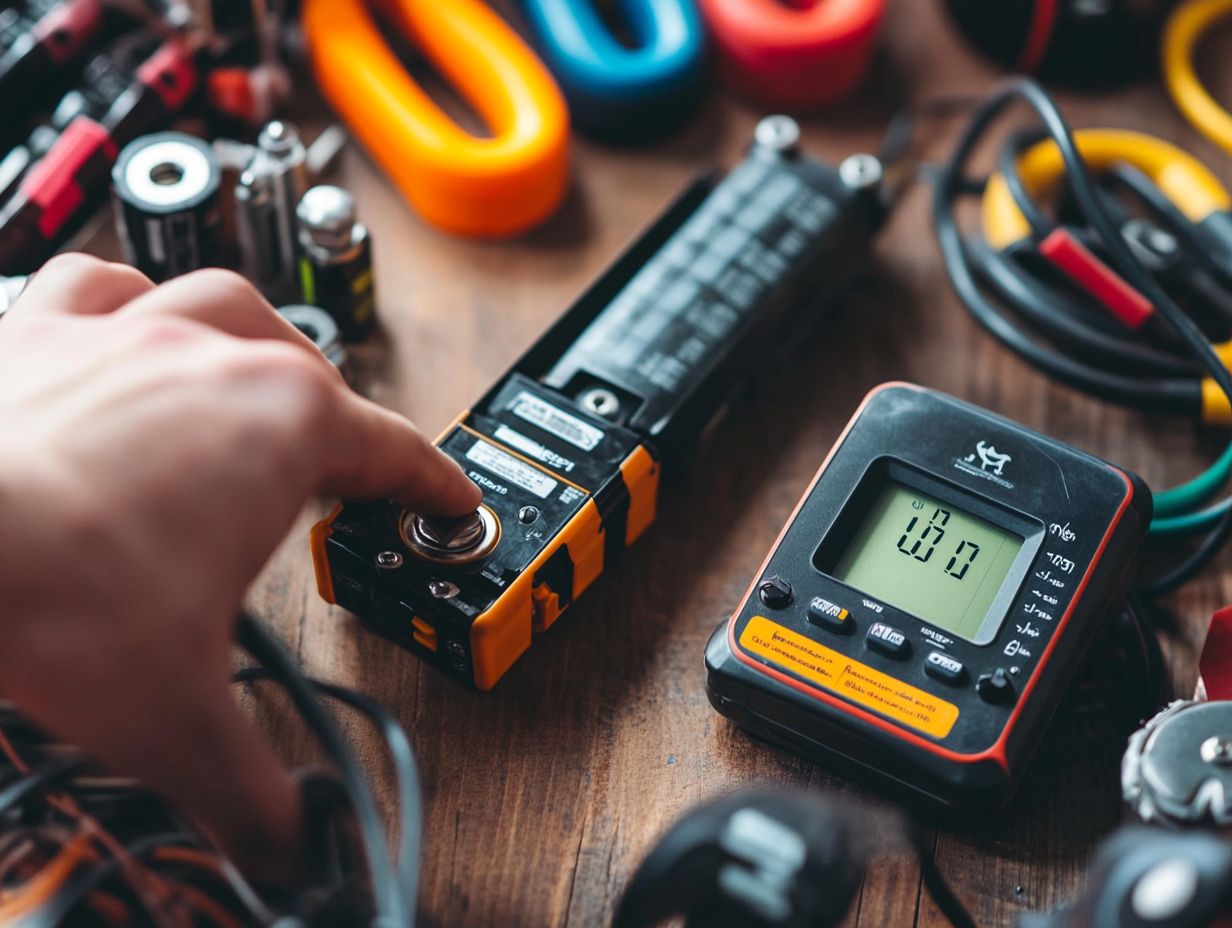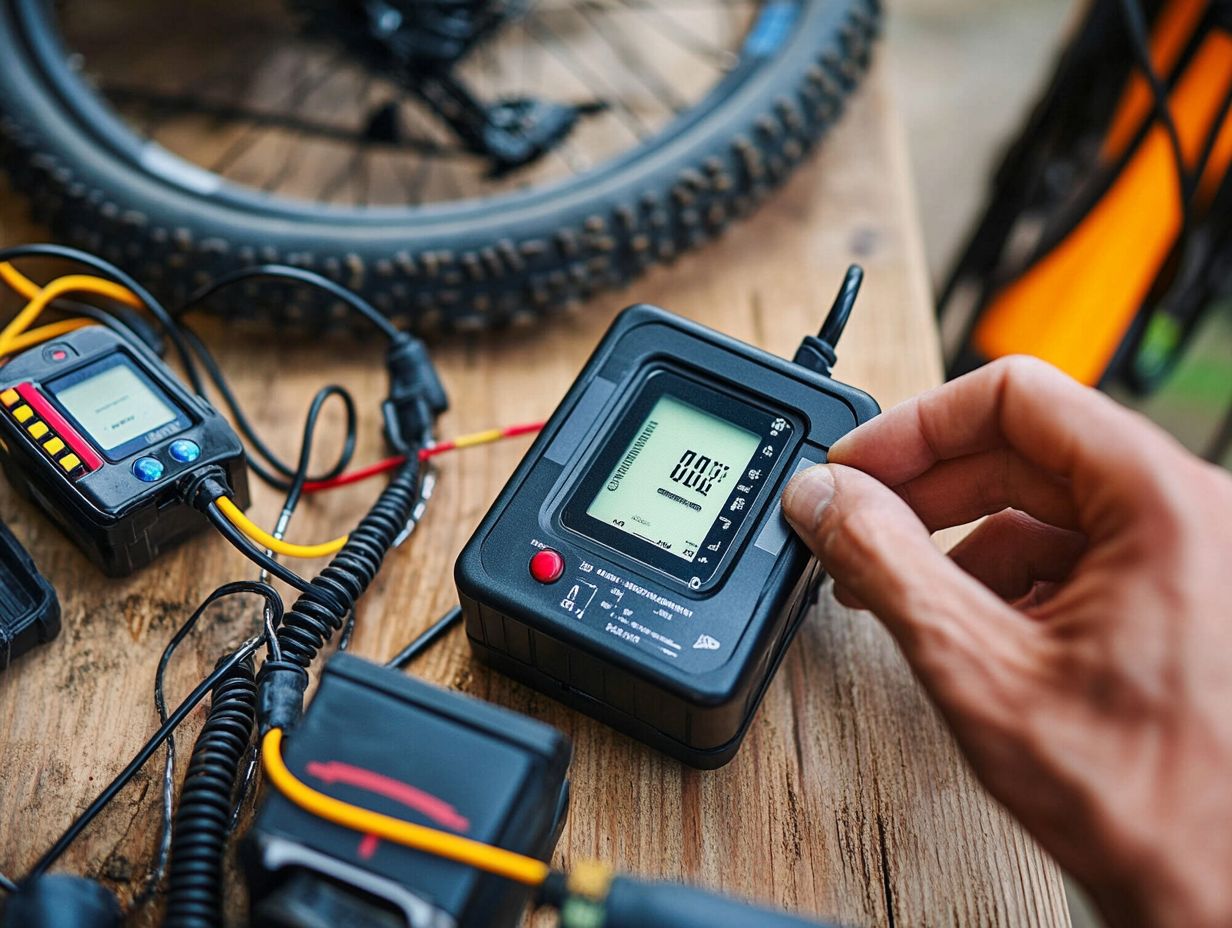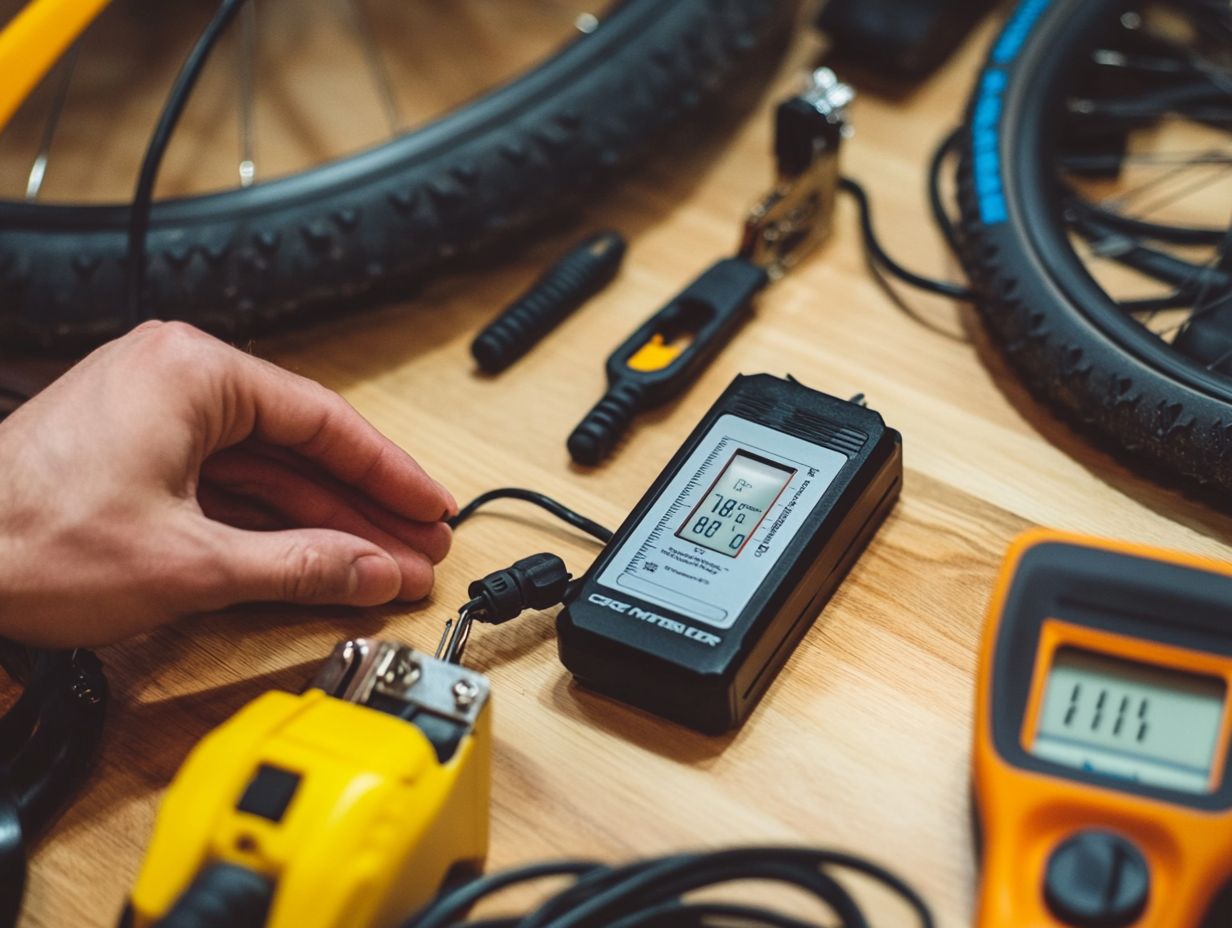What to Look for in Electric Bicycle Batteries
Electric bicycles are transforming commuting. At the core of any e-bike is its battery.
Selecting the right battery can greatly influence your ride. It impacts range, weight, charging time, and compatibility.
This article explores various types of e-bike batteries. We ll highlight key factors to consider when making your choice and share practical tips for maintenance and replacement.
A comparison of different brands will help you find the perfect fit for your needs. Whether you’re a seasoned cyclist or just starting out, knowing about e-bike batteries is vital for optimizing performance and enjoyment.
Contents
- Key Takeaways:
- Understanding Electric Bicycle Batteries
- Factors to Consider When Choosing a Battery
- Maintaining and Replacing E-Bike Batteries
- Comparing Different Battery Brands
- Frequently Asked Questions
- What to Look for in Electric Bicycle Batteries and E-Bike Specifications?
- What is the ideal battery capacity for an electric bicycle?
- What is the recommended voltage for electric bicycle batteries?
- How long does it take to charge an electric bicycle battery?
- Is the weight of an electric bicycle battery important?
- What is the average lifespan of an electric bicycle battery?
Key Takeaways:

- Choose a battery with the right capacity and range for your rides.
- Consider the weight, size, charging time, and compatibility for convenience.
- Follow proper care tips to maintain your e-bike battery and know when to replace it.
Understanding Electric Bicycle Batteries
Understanding electric bicycle batteries is key for e-bike enthusiasts. The type of battery you choose greatly affects performance and longevity.
Today, you’ll encounter batteries like lithium-ion and lead-acid. Each type has unique features that influence capacity and range.
Key factors include voltage output, amp-hours, and watt-hours. These determine how well your e-bike performs in different conditions.
Types of Batteries Used in E-Bikes
E-bikes usually feature two main battery types: lithium-ion and lead-acid. Each offers specific advantages and disadvantages.
Lithium-ion batteries are favored for their high energy density. They offer a longer cycle life, allowing for more rides before needing replacement.
Lead-acid batteries may be budget-friendly, but they often fall short in performance and longevity. Their extra weight can impact your bike’s balance.
Lithium-ion batteries require minimal maintenance. Conversely, lead-acid batteries need regular checks to ensure optimal performance.
Factors to Consider When Choosing a Battery
Choosing the right battery for your electric bike involves several critical factors. These elements significantly influence performance and your overall experience.
Look at battery capacity, range, and charging time. Select a battery that matches your e-bike s specifications for optimal performance.
Understanding the details of charging voltage and time is essential. These aspects directly affect how practical your e-bike is for daily use.
Battery Capacity and Range

Battery capacity, measured in watt-hours and amp-hours, is crucial for your e-bike range. It greatly affects how far you can ride on a single charge.
Pay attention to battery specifications. Larger capacities generally provide longer rides and better performance.
A 750Wh battery offers a smooth ride, especially on hilly terrains. A 500Wh battery works well for leisurely weekend rides.
Users with higher-capacity batteries often report less anxiety about recharging frequently. This boosts their overall enjoyment and willingness to explore new routes.
Keep in mind that factors like your weight, the type of terrain, and the level of pedal assistance you choose will further influence your actual range. Understanding battery dynamics is essential when selecting the right e-bike for your adventures.
Weight and Size
The weight and size of the battery play a crucial role in your e-bike’s overall performance and handling. They influence factors like weight distribution and agility.
A larger battery typically provides an extended riding range. This allows for longer adventures without frequent recharges. It s beneficial for tackling extended journeys or challenging terrains.
However, the increased size often adds weight, making hill climbing more arduous and reducing maneuverability on steep inclines.
On the flip side, smaller batteries can enhance agility and responsiveness, improving performance in tight spaces or heavy traffic. Yet, this comes at a cost: a limited range that can hinder those looking to explore ambitious routes or tackle steep gradients requiring higher torque.
Charging Time and Compatibility
Charging time is essential for your e-bike batteries, directly impacting how often you can hop on your electric bike.
Different battery types, like lithium-ion and lead-acid, have unique charging characteristics affecting performance. Lithium-ion battery packs typically offer faster charging times, which is advantageous for riders needing quick turnarounds.
In contrast, lead-acid batteries may take longer to charge fully, posing a potential inconvenience if you rely on shared charging stations.
Environmental factors like temperature influence charging rates and overall battery health. Understanding the role of battery types in electric bicycles ensures compatibility with various charging setups, maximizing your riding experience.
Maintaining and Replacing E-Bike Batteries
Ensuring the longevity and optimal performance of e-bike batteries hinges on proper maintenance and timely replacements. Neglecting these aspects can lead to reduced battery life and inefficient charging.
Tips for Prolonging Battery Life

To extend the life of your e-bike battery, follow these essential maintenance tips to optimize charging and performance over time.
Avoid complete discharges and do not let the battery dip to zero to boost longevity. Store the battery in a cool, dry environment, away from direct sunlight, to maintain its health.
Stick to the recommended charging times; overcharging can lead to reduced capacity.
Follow these effective guidelines now! Enjoy extended usage and enhanced efficiency from your e-bike battery, and elevate your riding experience today!
Indicators for When to Replace a Battery
Recognizing the signs that it’s time to replace your e-bike battery is essential for maintaining peak performance and safety.
When you notice a decline in range, the battery may not hold a charge effectively. This can impact ride quality and raise safety concerns, leaving you stranded.
If the charging process becomes sluggish taking longer than usual or not reaching full capacity this may further indicate that the battery is on its last legs.
Stay alert! Recognizing these signs lets you act quickly and keep your e-bike in top shape.
Comparing Different Battery Brands
When you evaluate different battery brands for e-bikes, it s essential to consider factors such as cost and performance. This approach ensures that you make an informed decision tailored to your specific riding needs.
Cost and Performance Analysis
A thorough cost and performance analysis of various battery brands can offer you essential insights, guiding you toward the ideal choice for your e-bike.
When evaluating batteries, keep several key performance metrics in mind, such as charge cycles, range, and overall efficiency.
Charge cycles represent the number of times a battery can be recharged before it loses its capacity, with some brands offering robust options that withstand numerous recharges.
Range shows how far your e-bike can travel on a single charge, which can vary widely among different manufacturers.
Efficiency measures how effectively a battery converts energy into usable power and can greatly impact your riding experience. By comparing these metrics across various brands, you can find the sweet spot that balances cost with optimal performance tailored to your needs, ensuring a truly rewarding e-bike experience.
Frequently Asked Questions

What to Look for in Electric Bicycle Batteries and E-Bike Specifications?
When shopping for electric bicycle batteries, consider key factors such as battery capacity, voltage, charging time, weight, and overall lifespan.
What is the ideal battery capacity for an electric bicycle?
The ideal battery capacity will depend on your needs and usage. Generally, a higher capacity provides a longer range but also results in a heavier and more expensive battery.
What is the recommended voltage for electric bicycle batteries?
Most electric bicycles operate on 36V or 48V batteries. The higher the voltage, the more power the bike will have. Always check your bike’s specifications to ensure compatibility.
How long does it take to charge an electric bicycle battery?
Charging time can vary depending on the capacity and type of battery. Generally, it can take anywhere from 2 to 8 hours to fully charge a battery.
Is the weight of an electric bicycle battery important?
The weight of a battery can significantly impact the overall weight and handling of the bike. Look for lightweight options if you plan on taking your bike on longer rides or need to carry it for storage.
What is the average lifespan of an electric bicycle battery?
The average lifespan can range from 2 to 5 years, depending on usage and maintenance. Properly caring for your battery is essential for ensuring longevity.
Stay safe on your rides! Check your battery today.






